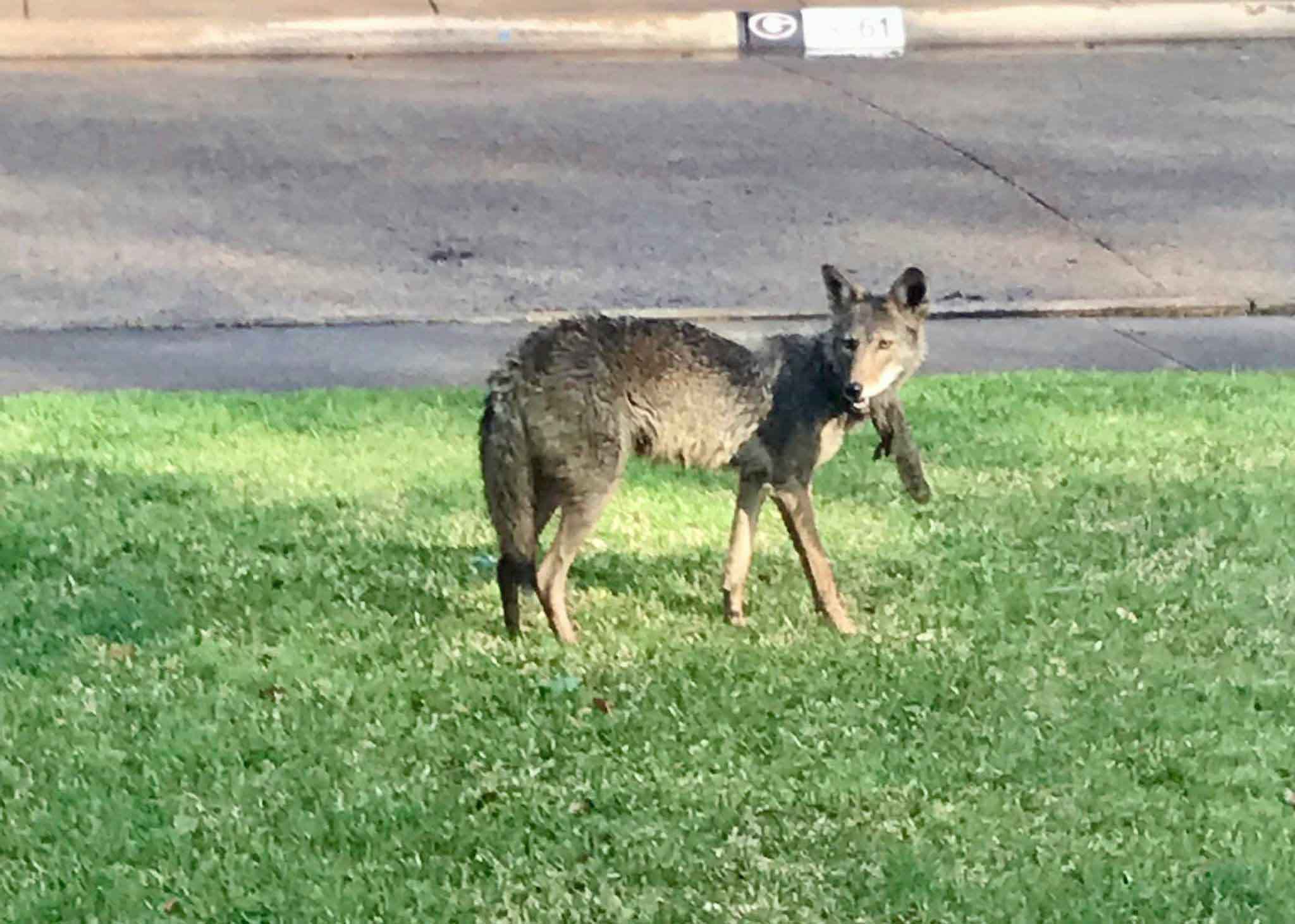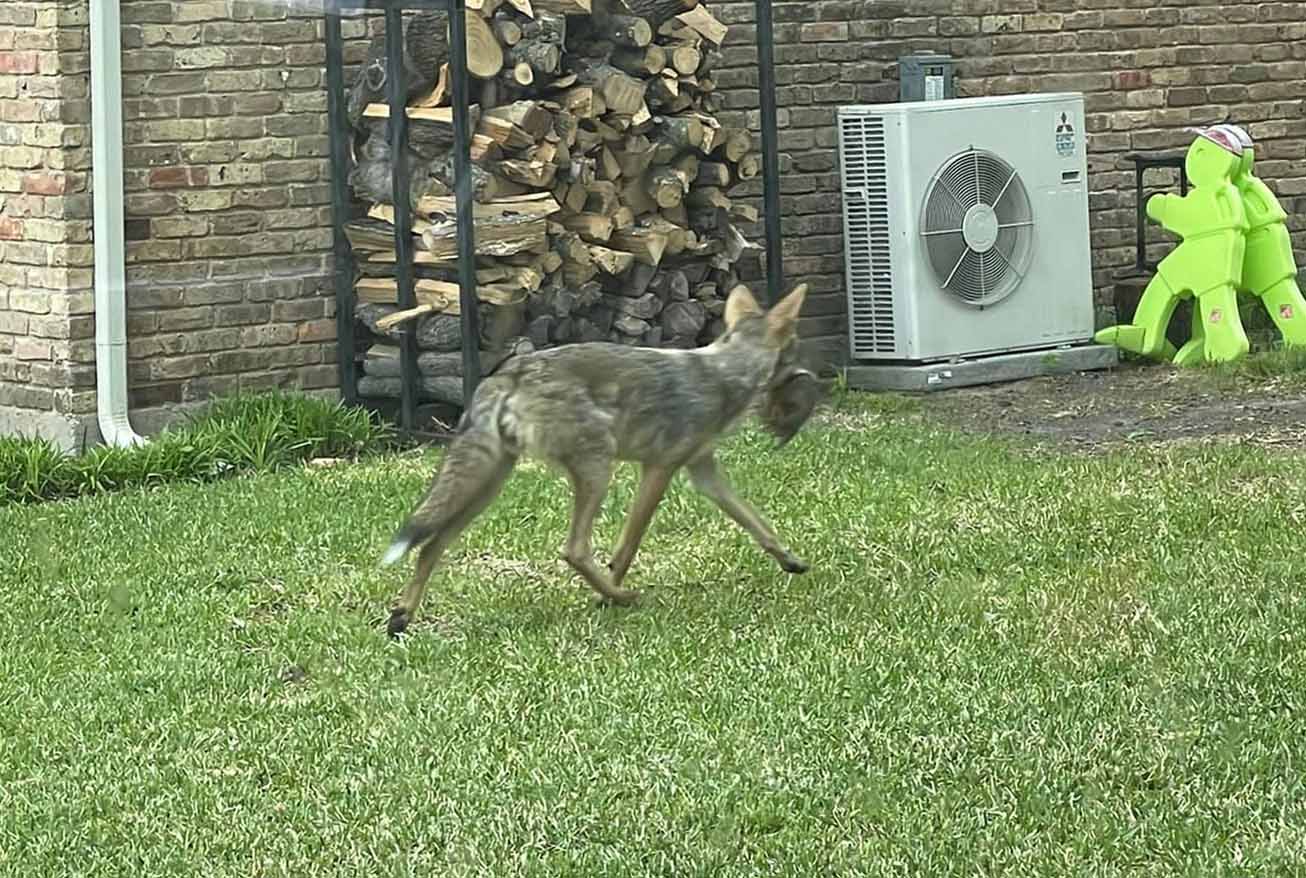A 2-year-old boy is in the hospital this morning after being attacked by a coyote in White Rock Valley. The attack occurred while the boy was on the front porch of his home on Royalpine near White Rock Trail.
Dallas Police and Fire-Rescue patrols were called to the scene about 8:28 a.m. and transported the child to a local hospital with critical injuries. He is currently in surgery and reportedly stable, with severe lacerations to his face.
Responding officers shot at the animal, which ran off into a nearby wooded area but returned a few times according to witnesses. Texas Game Warden patrols are still in the area attempting to capture the coyote, but have been unsuccessful so far. Authorities are advising homeowners to keep their pets and young children indoors until the situation is resolved.
“All those who live or visit that area should be on alert and consider this animal extremely dangerous,” said Dallas PD.
So far, police have not picked up a blood trail or located the animal using thermal technology.
Neighbors are praying for a rapid recovery and offering aid to the family. They say they’re frustrated, though, because they’ve seen – and reported to animal control – coyotes in White Rock Valley multiple times in the past few weeks.
Coyote attacks upon humans are rare, but they do sometimes occur. Urban Coyote Research has these tips for staying safe:
- Do not feed coyotes. The most effective way to prevent coyote attacks is to eliminate wildlife feeding. Coyotes that are fed in residential neighborhoods can lose their fear of people and may eventually test humans (and pets) as possible prey.
- Do not let pets run loose. Coyotes live nearby, even if you don’t know it. Keep dogs on leashes. Pets left outside, even with fencing, remain at risk for predation and unnecessary conflict.
- Do not run from a coyote. When you encounter a coyote, shout or throw something in its direction. Do not run away. Do not play victim if you can help it. If a coyote seems intent on defending a certain area, particularly around pupping season (May), your best bet may be to alter your route to avoid conflict.
- Repellents or fencing may help. Some repellents may work in keeping coyotes out of small areas such as yards. Repellents may involve activated lights or sound-making devices. Fencing may keep coyotes out of a yard, particularly if it is more than six feet in height with a roll bar across the top. Spray repellents (pepper spray, etc.) have been reported with only moderate to no success.
- Do not create conflict where it does not exist. If a coyote is acting as a coyote should by avoiding humans and pets, do not seek out opportunities to haze or otherwise aggravate the animal.
- Report aggressive, fearless coyotes immediately. When a coyote fails to exhibit fear of humans or acts aggressively, the animal should be reported as soon as possible to the appropriate officials. Signs of aggression are similar to those shown by domestic dogs and include agitated, unprovoked barking, raised hackles, snarling, growling and lunging.









